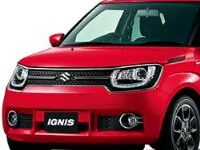Latest Suzuki models challenge traditional segmentation
 Suzuki, the Japanese car maker known for its mini cars, plays an important role in the global markets. Thanks to its strong presence in some Asian markets, Suzuki was the world’s 10th best-selling car maker during the first quarter of this year with more than 660,000 units sold. This company controls more than 40% of Indian car market (one of the 10 biggest markets in the world), and is Japan’s 4th largest car maker. It has also presence in some other South Asian markets, Australia and Europe, as the company left USA and Canada some years ago.
Suzuki, the Japanese car maker known for its mini cars, plays an important role in the global markets. Thanks to its strong presence in some Asian markets, Suzuki was the world’s 10th best-selling car maker during the first quarter of this year with more than 660,000 units sold. This company controls more than 40% of Indian car market (one of the 10 biggest markets in the world), and is Japan’s 4th largest car maker. It has also presence in some other South Asian markets, Australia and Europe, as the company left USA and Canada some years ago.
 But as a Japanese company, it has a different way of understating the car industry. Suzuki uses another approach when it is about the segmentation and product planning, despite the difficulties it may encounter due to the consumers preferences. This is more evident in Europe, where sometimes is difficult to understand to which segment its cars belong to. This is partially explained by the fact that some of its cars are conceived based on the Indian taste, which is sometimes different from the European. Therefore the cars that are created there may not perfectly fit into the European segments.
But as a Japanese company, it has a different way of understating the car industry. Suzuki uses another approach when it is about the segmentation and product planning, despite the difficulties it may encounter due to the consumers preferences. This is more evident in Europe, where sometimes is difficult to understand to which segment its cars belong to. This is partially explained by the fact that some of its cars are conceived based on the Indian taste, which is sometimes different from the European. Therefore the cars that are created there may not perfectly fit into the European segments.
 This is the case of the Suzuki Baleno. Even if its length (3.99 m) clearly places the Baleno in the B-Segment, this car is positioned above the Swift, which is also considered a subcompact. However the Swift’s length (3.85 m) would place it between the A and B segments. The Baleno is not only longer than the Swift but definitely bigger and more comfortable. Something similar happens in the A-Segment, where Suzuki is a master. The current city-car range of Suzuki in Europe is limited to the Celerio, after the Splash and Alto were discontinued. In Paris motor show, Suzuki will introduce the 2017 Ignis minicar, which features a crossover kei-car look, but which also sits in the A-Segment, based on its dimensions.
This is the case of the Suzuki Baleno. Even if its length (3.99 m) clearly places the Baleno in the B-Segment, this car is positioned above the Swift, which is also considered a subcompact. However the Swift’s length (3.85 m) would place it between the A and B segments. The Baleno is not only longer than the Swift but definitely bigger and more comfortable. Something similar happens in the A-Segment, where Suzuki is a master. The current city-car range of Suzuki in Europe is limited to the Celerio, after the Splash and Alto were discontinued. In Paris motor show, Suzuki will introduce the 2017 Ignis minicar, which features a crossover kei-car look, but which also sits in the A-Segment, based on its dimensions.



